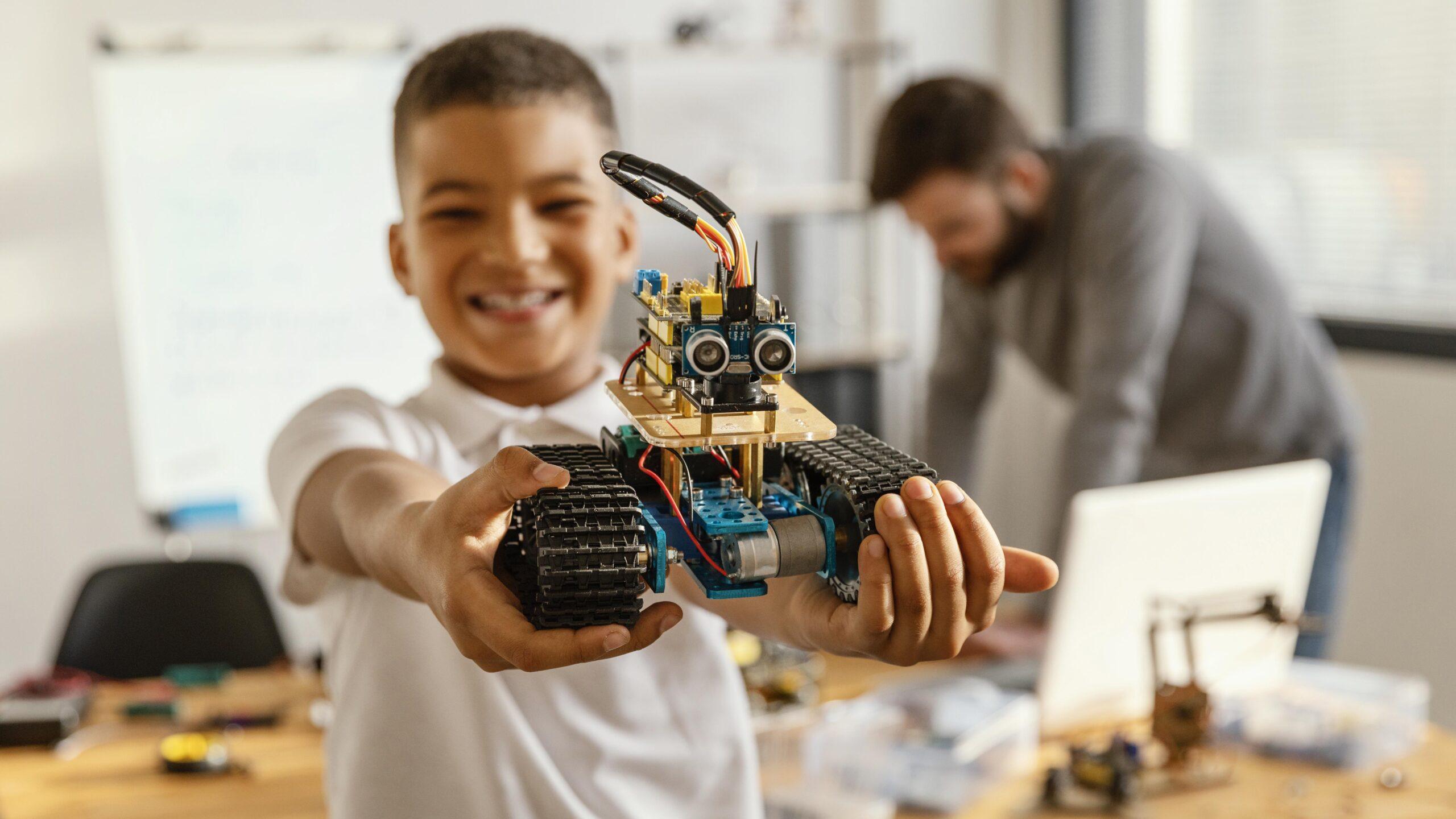Education is no longer limited to textbooks and chalkboards. With the rise of modern technology, schools and learning institutions are turning to robotics as a powerful tool to prepare students for the future. Robotics in education combines hands-on learning with creativity and problem-solving, making it an exciting and interactive way to teach. Let’s explore the top five applications of robotics in education.
1. Teaching STEM Subjects
Robotics plays a crucial role in teaching Science, Technology, Engineering, and Mathematics (STEM). Instead of only reading about theories, students can build and program robots, which gives them practical knowledge of physics, electronics, and coding. For example, constructing a robot car introduces students to mechanics, while programming it to move teaches them logic and coding basics. This approach makes learning more engaging and memorable.
2. Encouraging Problem-Solving and Critical Thinking
Robotics encourages students to think critically and creatively. When building or programming robots, learners often face challenges such as coding errors, mechanical issues, or design flaws. Solving these problems develops analytical skills and resilience. This hands-on problem-solving prepares students for real-world challenges, where solutions are rarely straightforward.
3. Promoting Teamwork and Collaboration
Many robotics activities are done in groups, especially in schools that host robotics clubs or competitions. Students learn to work as a team, sharing responsibilities such as coding, designing, and assembling. This not only strengthens collaboration skills but also teaches leadership and communication. In the modern workplace, teamwork is essential, and robotics provides an excellent platform to develop this skill early on.
4. Preparing Students for the Future Workforce
As industries adopt automation and artificial intelligence, the demand for robotics skills continues to grow. Teaching robotics in schools equips students with future-ready skills such as programming, engineering design, and digital literacy. Even students who don’t pursue careers in robotics benefit from exposure to problem-solving and technological thinking, which are valuable in almost any profession.
5. Making Learning Fun and Engaging
Perhaps the most underrated benefit of robotics in education is how fun it makes learning. Students are naturally excited to see their creations move, talk, or perform tasks. This excitement increases participation, motivation, and curiosity. For younger students, robotic toys or kits introduce concepts like sequencing and logic in a playful way. For older students, advanced robotics projects can spark interest in careers in engineering, science, and technology.
Conclusion
Robotics is revolutionizing education by making it more practical, interactive, and future-oriented. Through teaching STEM, encouraging problem-solving, promoting teamwork, preparing students for the workforce, and making learning fun, robotics is proving to be one of the most effective tools in modern classrooms.
As technology continues to advance, schools that adopt robotics early will give their students a significant advantage. The goal is not just to create future engineers or programmers but to nurture creative thinkers and problem-solvers who can thrive in an increasingly digital world.


